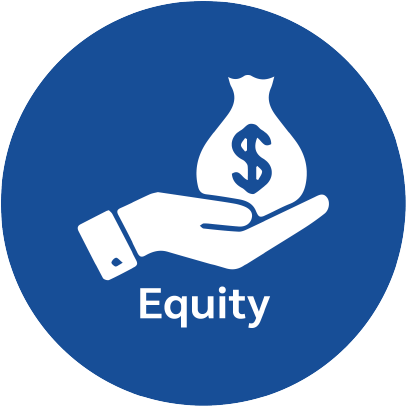15 min read I Date: 21 March 2024
Global Outlook
Developed markets rallied in January 2024, with Japan posting a gain of 8.4%. The S&P 500 and Europe followed closely, rising 1.6% and 1.4% respectively. However, in Asia most bourses experienced corrections. Hong Kong, Shanghai, and Korea faced significant declines, falling 10%, 6.3%, and 6% respectively. Malaysia on the other hand managed a positive return of 4%. Bond performance was mixed, ranging from a decline of 1.4% to a slight increase of 0.2%.1
The US Federal Reserve (Fed) maintained the Fed Fund rate at 5.50%. While the European Central Bank (ECB) maintained their commitment on combating inflation, the Fed has had preliminary discussions on potential interest rate cuts. The Fed’s balance sheet shrinkage continued at USD95 billion.2
We are positive on Asian equities given attractive investment themes and corporates having the potential to post better earnings growth in 2024 than developed markets.1 Within bonds we remain neutral on global developed market fixed income.
Global Outlook of the two capital markets: Fixed Income & Equity
Region: Developed economies
- Our view – neutral.
- The United States (US) in 4Q2023 reported a healthy 3.3% year-on-year GDP growth, although this is a moderation from the 4.9% seen in 3Q2023. However, resilient payroll data bolstered the case for a soft landing in 2024. The European Union economy, meanwhile, appears to be bottoming out.4
- The expected US soft landing and growing expectations of peaking interest rates has prompted us to adjust the duration band to 1.00x +0.10/-0.10 from +0.10/-0.15 previously.5

- Our view – positive.
- The US in 4Q2023 reported a healthy 3.3% year-on-year GDP growth, although this is a moderation from the 4.9% seen in 3Q2023. However, resilient payroll data bolstered the case for a soft landing in 2024. The European Union economy, meanwhile, appears to be bottoming out.4
- We moved US to overweight while maintaining the same stance on Japan. However, we moved Europe to Underweight.
Region: Regional (Asia-Pacific ex-Japan)

- Our view – neutral.
- Pockets of opportunities in local Asian currencies and Chinese credits as yields remain relatively attractive.6
- We expect investment grade Asian bonds to provide a gross yield of 4.50% to 5.50% in 2024.6

- Our view – positive.
- This is underpinned by cheap valuation and China’s potential pivot to more friendly policies.7
- We continue to focus on quality companies with earnings visibility, robust balance sheet, market share gainers and with pricing power.
Region: China

- Our view – neutral.
- The net supply of bond in December 2023 decreased by RMB185 billion driven by higher redemption (RMB299 billion) of non-financial issuers. financial issuances.8
- The default rate for 2023 eased to 0.18% from 0.28% in 2022. The property sector contributed the bulk of the default in 2023.8

- Our view – positive.
- China's pro-growth policy actions helped sustain economic activity, with Q42023 GDP growth of 5.2%, up from 4.9% in Q32023.7
- The manufacturing PMI for January 2024 rose to 49.4 from 49 in December 2023, while the Services PMI edged higher to 50.7 from 50.4 over the same period.9
Region: Domestic (Malaysia)

- Our view – positive.
- Bank Negara Malaysia (BNM) maintained the Overnight Policy Rate (OPR) at 3.00% during the January 2024 Monetary Policy Committee (MPC) Meeting.10
- Portfolio duration has been adjusted slightly but still maintained at medium. This is to switch out of government bonds and buying selective corporate bonds in the primary market.
- We still prefer credits over government bonds.

- Our view – positive.
- The National Energy Transition Roadmap (NETR) and the Industrial MasterPlan 2030 could revitalise domestic investment and buoy consumption.
- We continue to favour Construction, Property and Utilities as beneficiaries from the NETR. We also favour selected Technology and Financial names.
Our Strategy
- We upgraded our stance on US to Overweight from Neutral driven by the higher exposure to semiconductor related tech names. Strong earnings and secular tailwinds of increasing AI adoption may continue to support mega tech names and their valuations could remain high if interest rates don’t surge sharply. EU is revised to Underweight from Neutral as the region does not compare well with US and Japan.1 We maintain an overweight stance on Japan, despite experiencing some economic slowdown, there are increasing signs that inflation and wage increases may be sustainable in 2024. The latter is expected to lift household real income and support a virtuous cycle between wage and price increases. This may lead to the Bank of Japan (BOJ) exiting its Negative Interest Rate Policy, although the shift is anticipated to be gradual to prevent market disruption.11
- On equity, we are positive on Asia as earnings growth is expected to be stronger than developed markets. In addition, Chinese policymakers’ dovish policies further supports our conviction on Asia.7
- The commitment of the Malaysia government to lower the budget deficit to 5% and 3.2% by 2023 and 202512 respectively and the projected improvement in fiscal position over the medium term would significantly benefit and enhance the attractiveness of the domestic bond market.
- Our investment strategy for the first half of 2024, we encourage investors to:
- Focus on quality growth & income, and diversification to potentially help weather short-term volatility such as geopolitical tensions, inflationary issues, and recessionary concerns. The growth element for the portfolio will emanate from tapping into Asia and China’s economic recovery from the reopening.
- Position for interest pivot by the Developed Markets’ central banks and potentially declining USD index. Our preferred growth-oriented asset classes include Asia, ASEAN, China, Technology, Biotechnology as well as quality Small & Mid Cap (US and Malaysia) names.
Our Fund Options
1. Universal Funds
| Risk Scale | Fund Options | |
Low High | Conservative | • Principal Islamic Money Market Fund |
| Mildly conservative | • Principal Lifetime Bond Fund • Principal Islamic Lifetime Enhanced Sukuk Fund • Principal Islamic Lifetime Sukuk Fund • Principal Islamic Global Sukuk Fund • Principal Lifetime Enhanced Bond Fund | |
| Moderate | • Principal Lifetime Balanced Income Fund • Principal Islamic Lifetime Balanced Growth Fund | |
| Mildly Aggressive | • Principal DALI Global Equity Fund MYR • Principal ASEAN Dynamic Fund • Principal Asia Pacific Dynamic Mixed Asset Fund | |
| Aggressive | • Principal Global Titans Fund • Principal Global Millennial Equity Fund • Principal Asia Pacific Dynamic Growth Fund • Principal Greater China Equity Fund • Principal China Direct Opportunities Fund • Principal Greater Bay Fund |
2. Islamic Funds
| Risk Scale | Fund Options | |
Low High | Conservative | • Principal Islamic Money Market Fund |
| Mildly conservative | • Principal Islamic Lifetime Sukuk Fund • Principal Islamic Global Sukuk Fund | |
| Moderate | • Principal Islamic Lifetime Balanced Growth Fund | |
| Mildly Aggressive | • Principal DALI Global Equity Fund MYR • Principal DALI Asia Pacific Equity Growth Fund • Principal Islamic Asia Pacific Dynamic Income and Growth Fund | |
| Aggressive | • Principal Islamic Asia Pacific Dynamic Equity Fund • Principal Islamic Small Cap Opportunities Fund |
3. EPFMIS Universal Funds
| Risk Scale | Fund Options | |
Low High | Conservative |
|
| Mildly conservative |
| |
| Moderate |
| |
| Mildly Aggressive |
| |
| Aggressive |
|
4. EPFMIS Islamic Funds
| Risk Scale | Fund Options | |
Low High | Conservative |
|
| Mildly conservative |
| |
| Moderate |
| |
| Mildly Aggressive |
| |
| Aggressive |
|
You may obtain a copy of the Prospectus/Information Memorandum/Disclosure Document and its Product Highlight Sheet (if any) for the above-mentioned funds at our offices, distributors, or our website at www.principal.com.my.
Click here to download the PDF format
Disclaimer:
We have based this document on information obtained from sources we believe to be reliable, but we do not make any representation or warranty nor accept any responsibility or liability as to its accuracy, completeness or correctness. Expressions of opinion contained herein are those of Principal Asset Management Berhad only and are subject to change without notice. This document should not be construed as an offer or a solicitation of an offer to purchase or subscribe or sell Principal Asset Management Berhad’s investment products. The data presented is for information purposes only and is not a recommendation to buy or sell any securities or adopt any investment strategy. This material is not intended to be relied upon as a forecast, research, or investment advice regarding a particular investment or the markets in general, nor is it intended to predict or depict performance of any investment. We recommend that investors read and understand the contents of the funds’ prospectus and product highlights sheet available on the Principal website, which have been duly registered with the Securities Commission Malaysia (SC). Registration of these documents does not amount to nor indicate that the SC has recommended or endorsed the product or service. There are risks, fees and charges involved in investing in the funds. You should understand the risks involved, compare, and consider the fees, charges and costs involved, make your own risk assessment and seek professional advice, where necessary. Past performance is not an indication of future performance. This article has not been reviewed by the SC.
Sources
1 Bloomberg, 29 February 2024
2 Federal Reserve Board, 29 February 2024
3 Principal, 29 February 2024
4 European Central Bank, 29 February 2024
5 Federal Open Market Committee (FOMC), 29 February 2024
6 JP Morgan Research, 29 February 2024
7 Bloomberg, 29 February 2024
8 BofA Securities, 29 February 2024
9 National Bureau of Statistics of China, 29 February 2024
10 Bank Negara Malaysia, 29 February 2024
11 Bank of Japan (BoJ), 29 February 2024
12 DOSM, BNM, 29 February 2024
What to do next?
- If you need any investment assistance, please get in touch with your financial consultant. (We can help you find one). They can assist you with your investment goals and advice you on your risk tolerance.
- Alternatively, you can also manage your portfolio on-the-go, anytime, anywhere via our online investment portal.
- If you need further assistance, please leave your details here, and we will connect with you.


